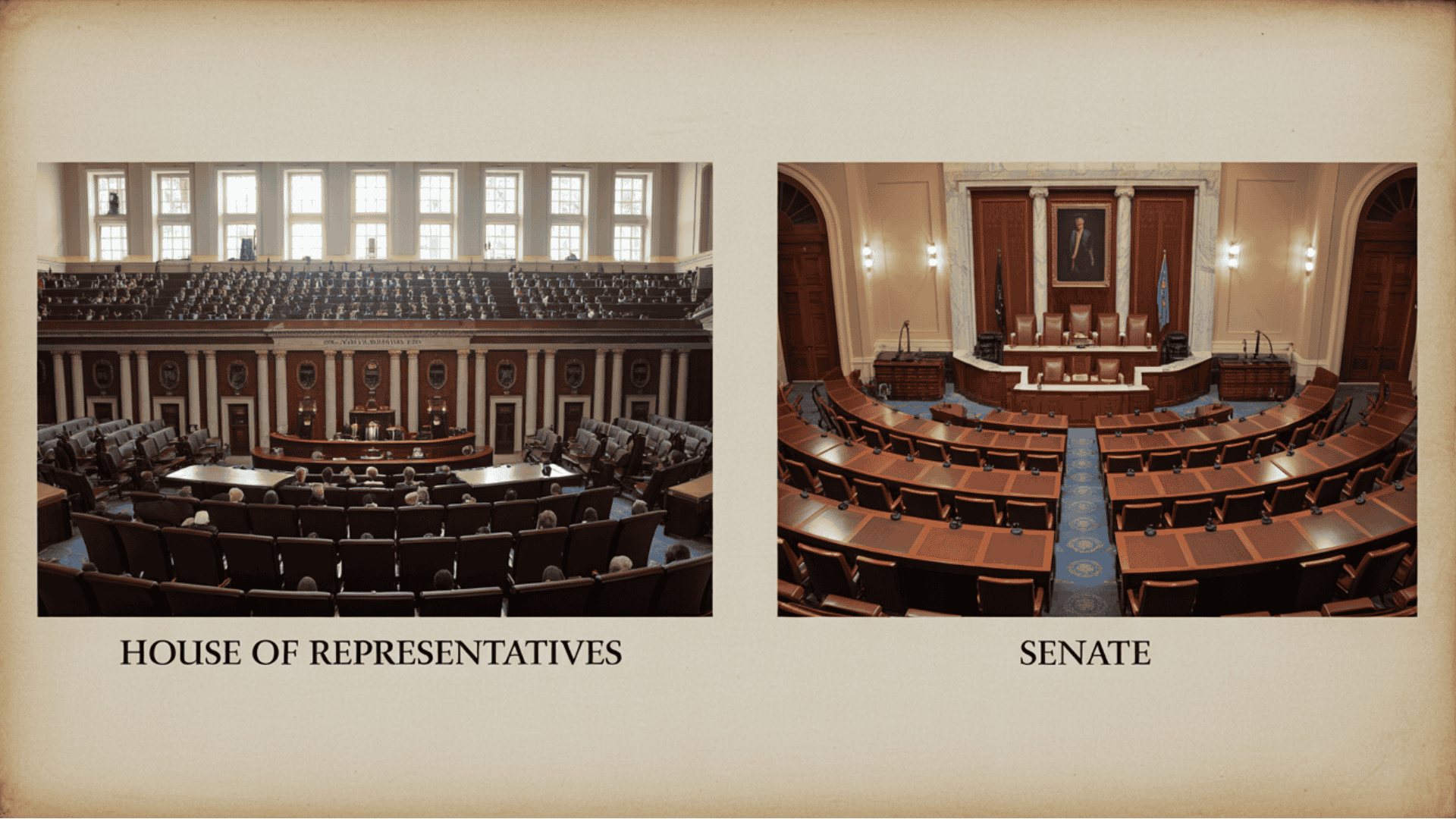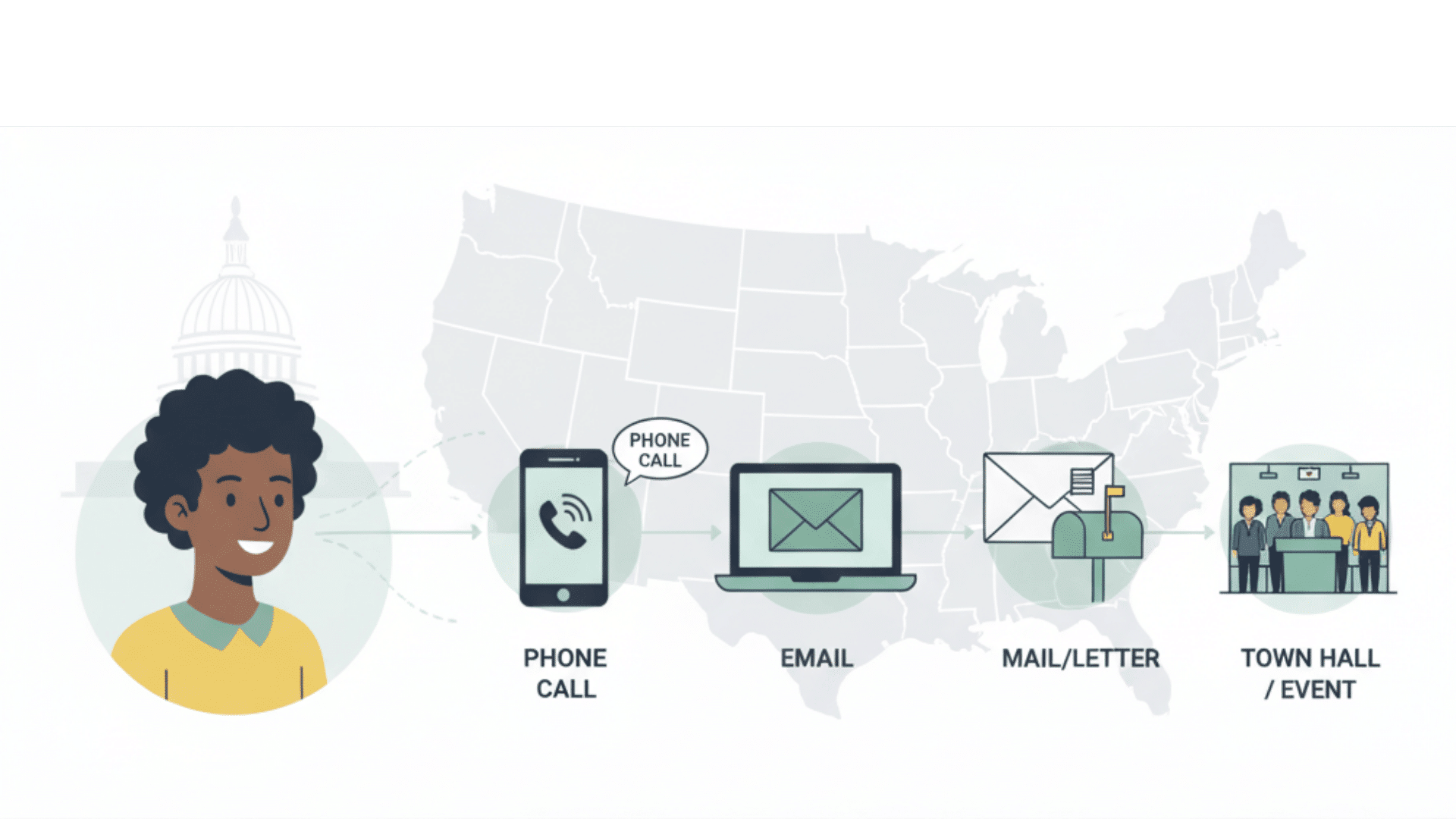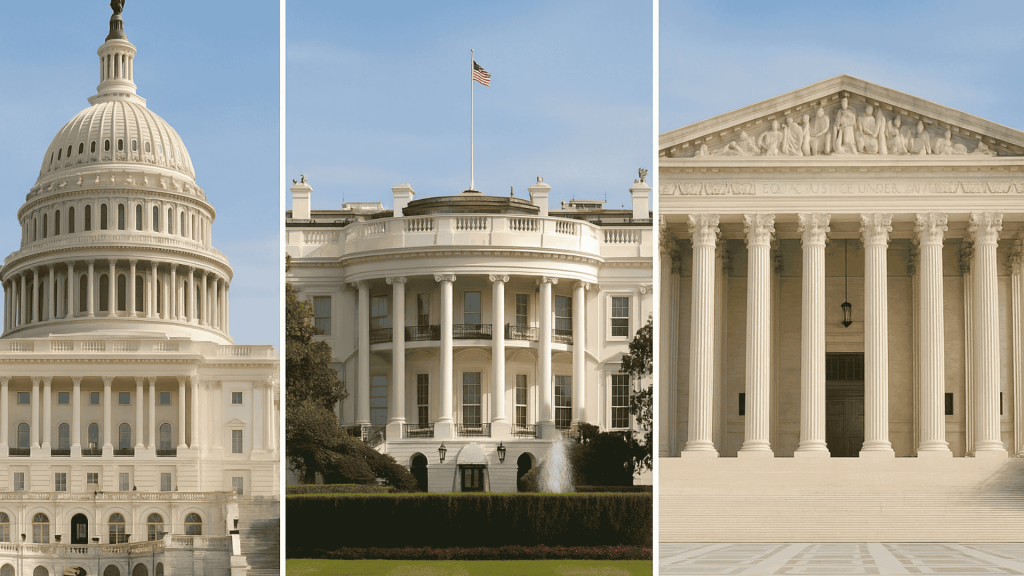Have you ever wondered how laws get made or who really runs the country? The U.S. government might seem complex, but it’s actually built on a simple idea: the balance of power.
Many people feel confused about basic civics. They are unaware of the distinction between the House of Representatives and the Senate. They’re not sure how a bill becomes law.
In this blog, I’ll explain exactly how the U.S. government operates. You’ll learn about the three branches, how they check each other’s power, and even how to contact your own representatives.
By the end, you’ll understand the system that affects your daily life. Let’s break it down step by step.
The Three Branches of Government Explained
The U.S. government splits power into three separate branches. This prevents any one person or group from having too much control.
1. Legislative Branch (Congress)
Congress writes and passes all federal laws. This includes everything from tax rates to environmental rules. The House and Senate must both approve a bill before it can become law.
Congress also controls government spending, declares war, and regulates trade between states. Think of them as the rule-makers of the country.
2. Executive Branch (President)
The President leads the executive branch, which encompasses all federal agencies, including the FBI, EPA, and the Department of Education.
Once Congress passes a law, the President’s job is to ensure it is enforced nationwide. The President also commands the military, meets with world leaders, and can sign or veto bills that Congress sends over.
3. Judicial Branch (Courts)
Federal courts, led by the Supreme Court, determine the actual meaning of laws when there is disagreement. They settle disputes between states, rule on constitutional rights, and determine if laws violate the Constitution.
When someone sues the government or challenges a law in court, judges have the final say on how that law should be applied.
Think of it like a three-legged stool. Remove one leg, and the whole thing falls over. The founders designed it this way intentionally, after having lived under a king’s absolute power.
What Congress Actually Does
Congress is the legislative branch and the heart of American democracy. It consists of two parts: the House of Representatives and the Senate, each with distinct rules but equal power.
Congressional Structure

Congress, comprising the House of Representatives and the Senate, is the legislative branch of government that creates laws and carries out key responsibilities that affect every American.
The House of Representatives:
- 435 members total
- 2-year terms
- Representation based on state population
- Larger states get more representatives
The Senate:
- 100 members total
- 6-year terms
- 2 senators from each state
- Equal representation regardless of state size
Congressional Powers
Congress holds significant powers that shape the lives of all Americans. It controls how tax dollars are spent, declares war and funds the military, and creates federal laws that guide everything from taxes to environmental protections.
The Senate also confirms presidential appointments, including judges, cabinet members, and agency leaders.
Ultimately, Congress has the authority to impeach and remove officials, such as presidents or judges, who commit serious crimes.
Congress works through committees. Small groups of members study specific topics, such as healthcare or defense. They draft bills, conduct hearings, and determine what gets voted on by the full chamber.
How a Bill Becomes Law: The Step-by-Step Process
Understanding how a bill becomes law helps you see where citizens can make their voices heard:
Step 1: A representative or senator introduces the bill. Any member of Congress can write and submit a new bill. They often get ideas from constituents, interest groups, or current events.
Step 2: The Committee reviews and marks up the bill
A small group of experts thoroughly examines the bill. They can change it, improve it, or completely eliminate it before it progresses further.
Step 3: Full chamber debates and votes (House or Senate). All members of that chamber discuss the bill openly. Then they vote yes or no – majority wins.
Step 4: If passed, it goes to the other chamber. The bill moves from the House to the Senate or from the Senate to the House of Representatives. Both chambers must approve the exact same version.
Step 5: The Other chamber repeats the process. The second chamber does its own committee review and floor vote. They might make changes and send it back.
Step 6: If both chambers pass it, the bill goes to the President. Once identical versions pass both the House and the Senate, it lands on the President’s desk. Now the executive branch gets involved.
Step 7: The President signs it into law OR vetoes it. The President has 10 days to make a decision. Sign it, and it becomes law; veto it, and it is sent back to Congress.
Step 8: If vetoed, Congress can override the veto with a two-thirds vote in both chambers. Congress gets one more chance to make it law anyway. But they need a supermajority – much harder than a simple majority.
Most bills die in committee. Only about 4% of introduced bills become law. This might seem inefficient, but it ensures careful review of proposed changes.
Powers of President and Congress: Who Does What?
While both the President and Congress hold significant authority, their powers are distinct—and designed to balance each other.
| President’s Powers | Congress’s Powers |
|---|---|
| Signs or vetoes bills | Writes and passes laws |
| Commands military | Declares war and funds the military |
| Appoints judges | Confirms judicial appointments |
| Negotiates treaties | Ratifies treaties |
| Enforces federal laws | Creates federal laws |
| Pardons federal crimes | Impeaches officials |
| Issues executive orders | Controls government spending |
Key difference: The President executes policies, but Congress makes laws and policies. The President can’t spend money without Congress’s approval first.
Congress can’t enforce laws without the President’s agencies carrying them out. This tension is intentional. It forces both sides to work together and compromise.
The Supreme Court: Nine Justices Who Shape America

The Supreme Court has nine justices who serve for life. The President nominates them, and the Senate confirms them.
What they do: The Court interprets the Constitution and federal law. They decide if laws violate our basic rights. Their decisions become the law of the land for everyone.
The Court only hears about 60-80 cases per year out of thousands requested. They pick cases that affect the whole country or resolve conflicts between lower courts.
Recent impact: Supreme Court decisions have shaped everything from civil rights to healthcare to voting procedures. Their rulings can overturn laws passed by Congress and signed by the President.
How Congress Can Override a Presidential Veto
When the President vetoes a bill, it’s not automatically dead. Congress can revive it through a veto override.
Here’s how veto override works:
- Both the House and Senate must vote again
- Each chamber needs a two-thirds majority
- If both chambers reach two-thirds, the bill becomes law anyway
- The President cannot veto an override
Reality check: Overrides are rare. They require broad bipartisan support. Since 1969, Congress has only overridden about 4% of presidential vetoes.
Most successful overrides occur when Congress is strongly committed to an issue and has clear public support.
How to Contact Your Senator or Representative

Democracy only works when citizens speak up. Your representatives need to hear from real people in their districts to understand what matters most.
Find Your Representatives: Visit house.gov or senate.gov, enter your ZIP code, and see who represents you: one House member and two senators.
Best Contact Methods: Phone calls to local offices are most effective, since staff track public concerns. You can also email through official sites, send letters to D.C. offices, or attend town halls and public events for face-to-face conversations.
Remember, these officials work for you. They want to hear from constituents because your input helps them make better decisions.
Final Thoughts
Now you know how the U.S. government works at its core. The three branches balance each other’s power: Congress writes laws, the President enforces them, and the courts interpret them.
Bills go through multiple steps before becoming law, and citizens can influence the process by contacting their representatives.
This system isn’t perfect, but it’s designed to protect your rights while keeping government accountable. The more you understand it, the better you can participate.
Your next step? Look up your representatives online, explore the committees they serve on, and review their voting records on issues you care about.
Staying informed is one of the most powerful ways to make your voice heard.





































